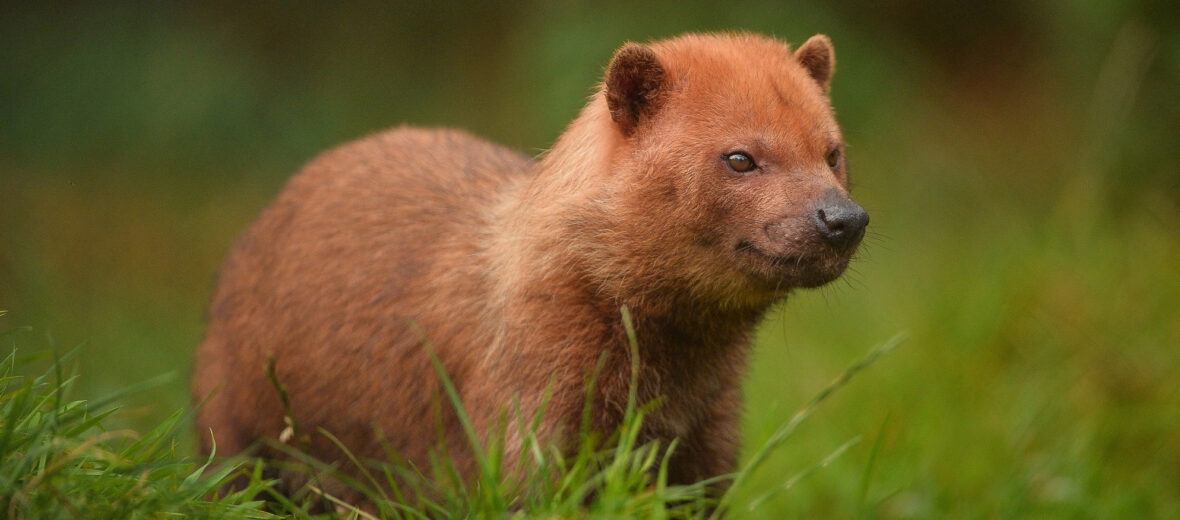
The bush dog, aka Savannah dog, Cachorro-do-mata, Cachorro-vinagre (vinegar dog), Zorrito vinagre, Zorro vinagre (Vinegar fox), Perro de monte (Bush dog), or Perro de agua (Water dog), hails from Panama, northern South America, Paraguay, Bolivia, southern Brazil, north-eastern Argentina, Peru, and Ecuador. They prefer to dwell in lowland forests, seasonally flooded forests, semi-deciduous forests, wet savannas, and cerrado (the massive tropical savanna eco-region in Brazil). As long as they are close to water, they’re happy. Due to habitat destruction at the hands of residential development and agriculture, hunting, trapping, invasive species, and viral/prion-induced diseases, these critters are listed as Near Threatened by the IUCN and their numbers are decreasing, day by day.
First the Stats…
Scientific name: Speothos venaticus
Weight: Up to 13 lbs.
Length: Up to 2 feet, plus up to a 6 inch tail
Height: Up to 12 inches
Lifespan: Up to 10 years
Now on to the Facts!
1.) Bush dogs are diurnal (active during the day).
2.) These critters spend a great deal of time in and around water.
3.) At night, they sleep in natural burrows or abandoned nests of armadillos.
4.) The bush dog is a social animal that can be found in groups of up to 12 individuals.
5.) A group of bush dogs is called a cry, pack, gang, kennel, or legion.
But wait, there’s more on the bush dog!
6.) They prey on acouchis, agoutis, pacas, rheas, and capybaras.
7.) The bush dog, being an apex predator, has no natural predators.
Did you know…?
They engage in cooperative hunting. Half the pack will chase down prey, while the other half wait to ambush the pursued prey.
8.) Bush dogs are monogamous (mate for life) and live in family groups of up to 12 individuals.
9.) Females undergo up to a 67 day gestation (pregnancy) that yields up to 6 pups.
10.) They produce a high pitched call and rely on these calls to communicate and find each other in the dense forests.
11.) They get one of their common names because they smell of vinegar.
Now a Short Bush Dog Video!
Be sure to share & comment below! Also, check out the Critter Science YouTube channel. Videos added frequently!
Want to suggest a critter for me to write about? Let me know here.



